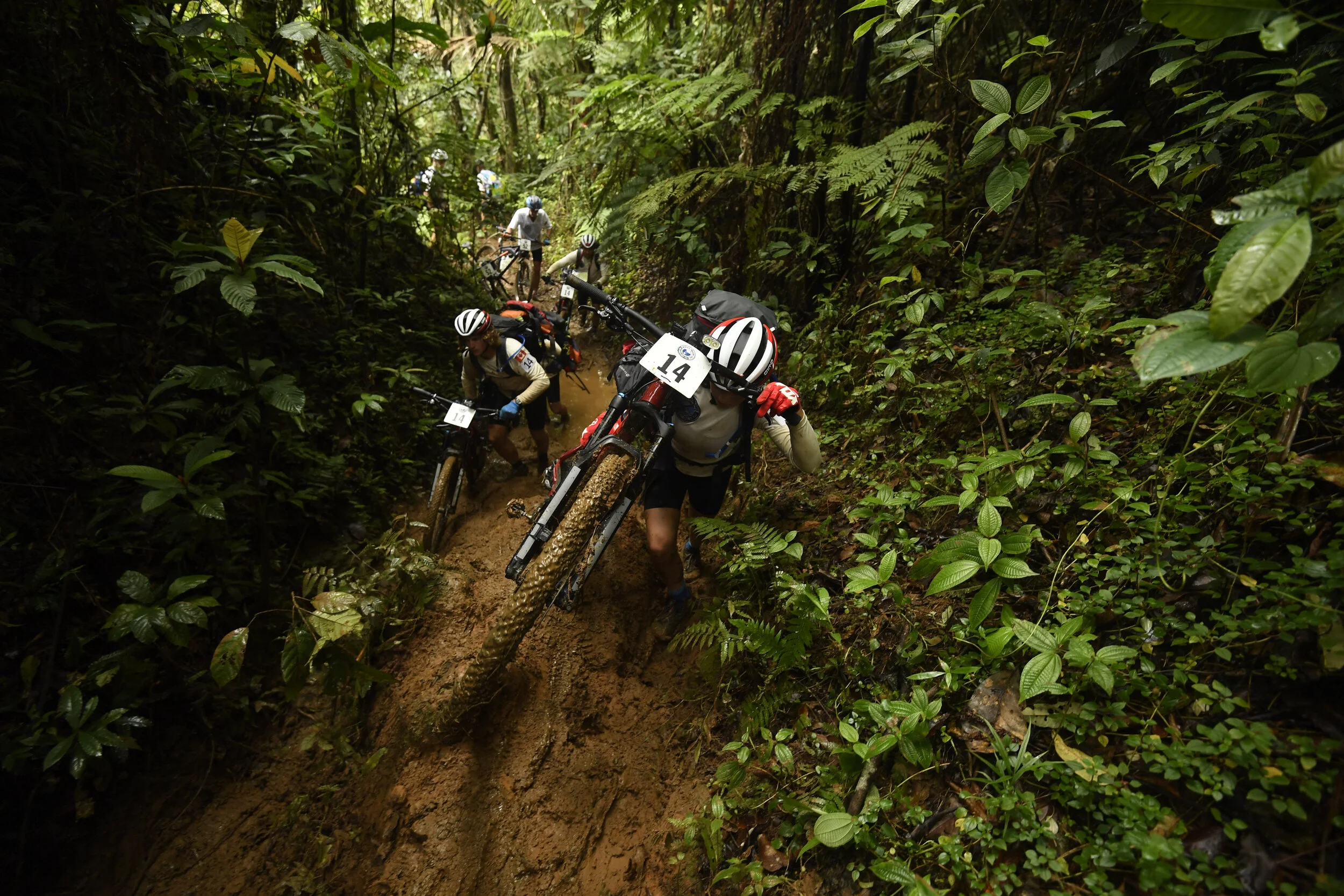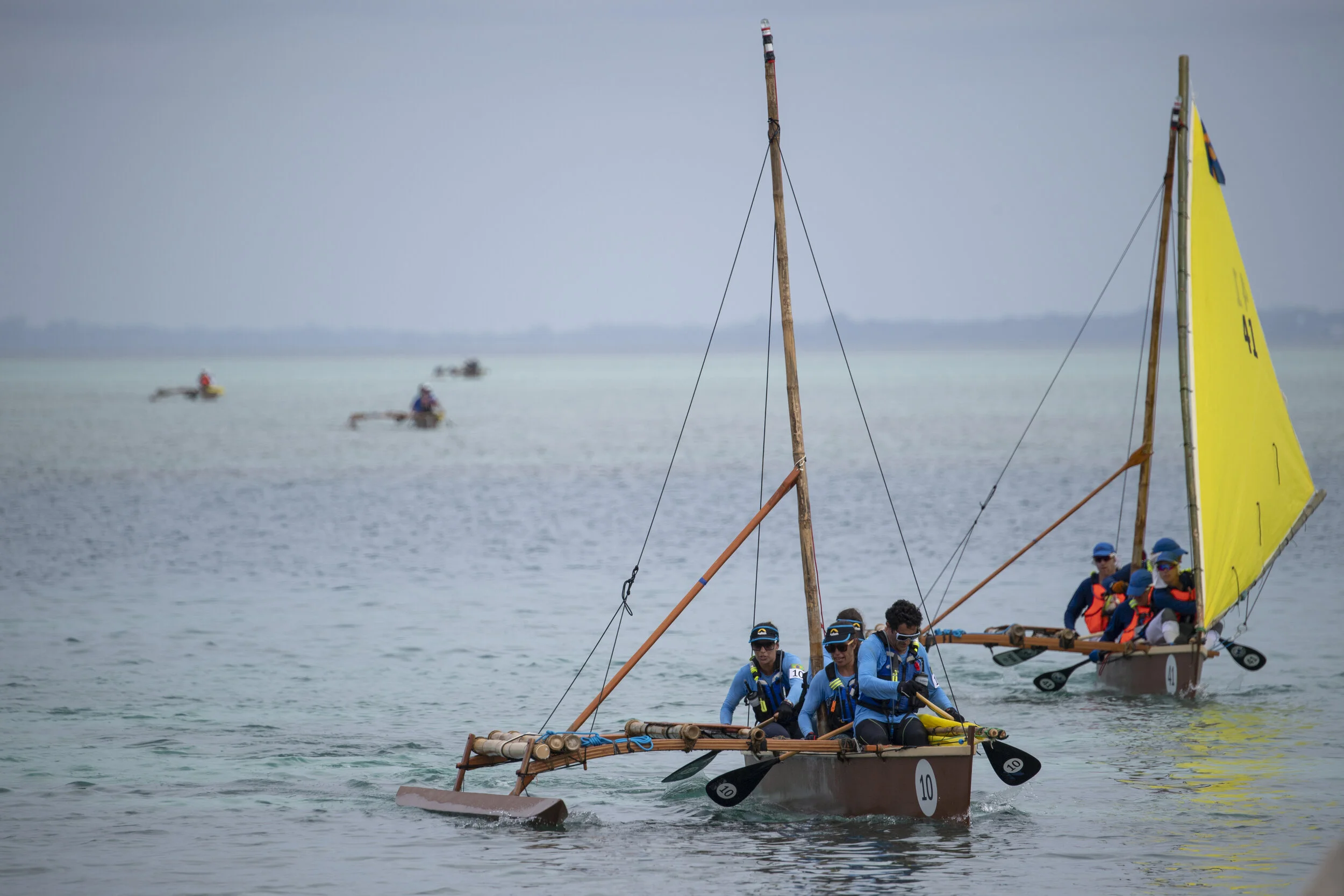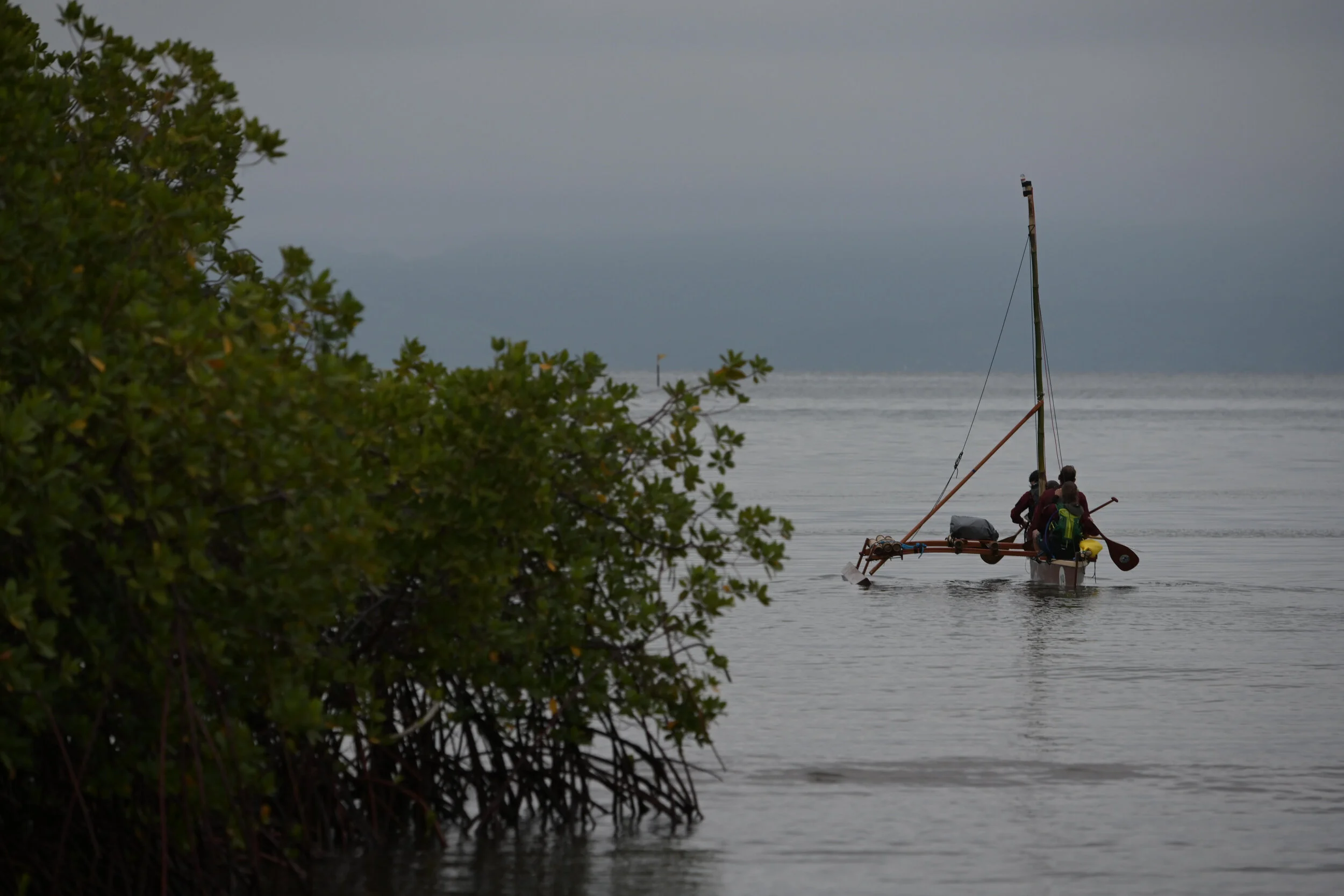Eco-Challenge Fiji 03 - Race Start
Eco-Challenge Fiji:
World’s Toughest Race
Tuesday, September 10th
Spoilers: Team Science Winning
Eco-Challenge Film Crews Arriving
Competitors were awoken at 0430 by the Eco-Challenge Fiji race management team’s announcement that it was time to get up and all teams needed to be ready by 0515. There was a flurry of activity as sixty-six teams scrambled to get their last minute race preparations together. As the competitors gathered in the center of the camp at 0515, they learned that one team had slept in and were just then getting up.
On the walk, Caitlin noticed the Russian team--Team Science Winning--carrying enormous 80-pound backpacking packs full of...God knows what...perhaps beakers and test tubes and model volcanoes that erupt when filled with vinegar.
The Eco-Challenge Fiji race management team walked the two hundred and sixty-four competitors about two miles to the ceremonial race start. On the walk, Caitlin noticed the Russian team--Team Science Winning--carrying enormous 80-pound backpacking packs full of...God knows what...perhaps beakers and test tubes and model volcanoes that erupt when filled with vinegar. They had enough capacity for all of it! They did not stand a chance, and she later learned they lasted until day two. Caitlin still wonders what could have possibly been in those packs...
At the ceremonial start, country flags surrounded a stage in a semi-circular fashion. All the cameras were in place with drones and helicopters flying over. It was spectacular.
Teams quickly learned the race was divided into five stages (Ocean, Jungle, River, Highlands, Island), with racers capturing an iconic medallion at each stage that would serve as the pass that allowed them on to the next stage. In between stages were camps where Team Assistant Crews (TACs) would set up team tents and have hot food waiting. Teams were required by the rules to spend a minimum of ninety minutes at each camp to allow for interviews if required. Additionally, teams had a sleep card rule that mandated they take a total of five sleeps of three hours each at Check Points (CPs) or camps of their choosing along the way. It was another element of strategy to consider during the race. The members of Team US Military were excited and ready to go.
After the filmed shot for the start, Eco-Challenge Fiji race management walked teams a short distance to the river, where the actual race was to start. Team captains received the Stage 1 maps and were given about fifteen minutes until go-time.
Teams were starting on the Camakaus, the traditional sailboat of the Fijians. The Eco-Challenge Fiji ocean leg team had given each team a one hour tutorial on how to sail the boats in the days prior to the race, so teams were very vaguely familiar on how to operate them.
Team US Military receiving their Camakau sailing briefing before embarking on the World's Toughest Race: Eco-Challenge Fiji
Up until this point, very little had been said to the competitors regarding the Amazon Prime Video production—the focus had solely been on the race itself. The only thing Eco-Challenge Fiji told competitors at the pre-race briefing was to “ignore the cameras and if someone was asking a question, look at that person to answer”.
As the teams gathered at the start, the Eco-Challenge Fiji race director, Kevin Hodder, comically mentioned that “if we did not know already, that this was going to be on TV and that we were going to have to do a couple shots for the ‘Hollywood’-type start."
With sixty-six teams starting on a narrow river, Team US Military had drawn a pretty good position—number twenty—which proved not to matter about fifteen minutes into the race.
Although Amazon had spent millions on this race and it was their biggest production ever, Caitlin and undoubtedly many other competitors fully appreciated how they handled the production versus race aspect. Throughout the race, they never told Team US Military what to do—at one point a cameraman mentioned that if the team walked out together to the standup paddleboards (SUPs) that it would be a cool shot, but for the most part the cameras were just in the background the whole time capturing the race. Team members were interviewed from time to time, but they never held the teams up; if competitors were in a hurry then they left the racers alone.
In the ceremonial start, Bear Grylls arrived by swooping in via helicopter and then after having jumped off of the skids mid-air, ran onstage to reveal the race course. This was the first time teams had seen the course map—it was dramatically revealed that they would be traveling 416 miles from Suva to Nadi (east to west across Fiji) with some island sailing on the front end and outrigger canoeing on the back end of the expedition.
Team US Military boarded their boat and patiently waited for the signal to start the race—a traditional sounding from a conch shell. The local Fijians had lined the shoreline and were anxiously awaiting the start. With sixty-six teams starting on a narrow river, Team US Military had drawn a pretty good position—number twenty—which proved not to matter about fifteen minutes into the race.
Caitlin Thorn is a guest blogger here. Caitlin Thorn is an accomplished endurance athlete, with numerous accolades as a distance runner, Olympic and half-Ironman distance triathlete, and adventure racer. Caitlin is a Track and Field Division I NCAA All-American, with numerous finishes in the half-marathon and marathon distances. She has been adventure racing for three years and has earned podium finishes at over 6 races and qualified for the 2019 USARA National Championship. Caitlin enjoys world travel and hiking, and when not pursuing outdoor adventure she serves as an active duty officer and engineer in the U.S. Air Force.
Caitlin can be followed via Facebook @caitlin.aub
















Eco-Challenge Fiji never promised to be an adventure race. Its claim was “The World’s Toughest Race”. Despite the lack of navigational challenges and jungle whacking (which was anticipated to be the hardest part of the race), Eco-Challenge Fiji was still the hardest race the members of Team US Military had ever done. The biking was tough, with incredible elevation gains and losses, and the weather added to the suck factor. This course tested the limits of racers’ mental capacity and their will to finish. Traveling across and along rocky rivers was tedious and broke some of the hardest people down. Continually slipping on rocks and banging up shins and feet tested the bounds of human fortitude and willpower.